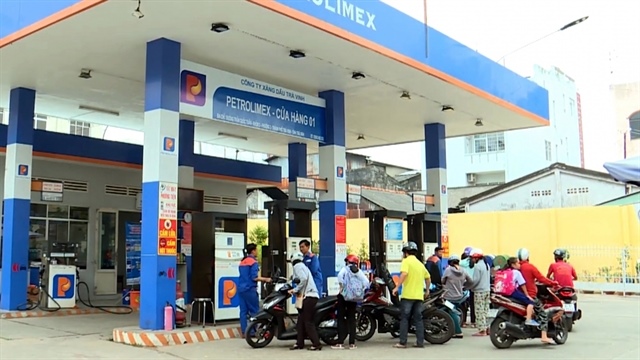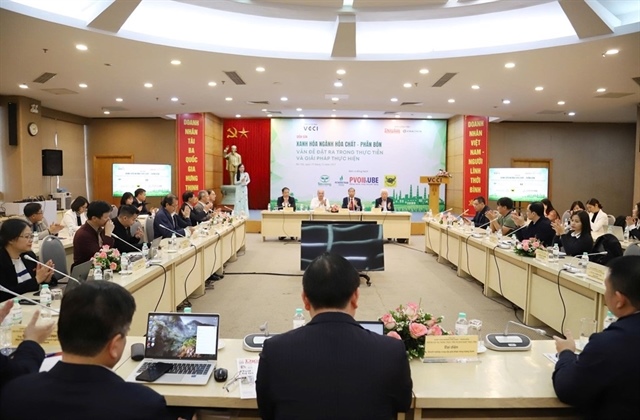Vietnam province fears ‘another Formosa’ as paper mill raises environmental concerns
Vietnam province fears ‘another Formosa’ as paper mill raises environmental concerns
With the fish death disaster caused by wastewater dumped by a steel plant into the waters off central Vietnam still fresh in the minds of citizens, administrators in a province housing a paper mill are worried about giving history the opportunity to repeat itself.

The administration of the central province of Quang Ngai has called on the Ministry of Natural Resources and Environment to provide more detailed guidance on how to ensure the VNT19 pulp mill in Binh Son District will not become ‘another Formosa.’
The Formosa scandal refers to last year’s disaster in which more than 100 metric tons of fish were killed, severely affecting the environment, jobs, and economies of four provinces along Vietnam’s central coast, all thanks to poorly treated wastewater from the namesake steel mill in Ha Tinh Province.
Taiwan’s Formosa Plastics Group later took responsibility for the disaster and agreed to pay US$500 million in damages to the government.
In a dispatch sent to the Ministry of Natural Resources and Environment on April 3, Quang Ngai chairman Tran Ngoc Cang demanded that the ministry confirm that the VNT19 wastewater discharge system installed under the water’s surface is in line with legal regulations.
The system raised concerns when it was publicized that it is the same system as that used at Formosa Ha Tinh.
The VNT19 complex, developed by the eponymous company, consists of a pulp making plant, a wastewater treatment system capable of treating 73,000 cubic meters of water per 24-hour period, and a 5.2km discharge pipeline.
The developer wants to discharge wastewater through Le Ninh River to the Viet Thanh Bay, about 500m to 1,000m away from the Le Thuy beach in the East Vietnam Sea.
More than 2,000 residents living near the pulp mill earn their livelihood from the sea, so the community was understandably on edge after hearing the mill will discharge its water into the ocean.
The Quang Ngai administration has every reason to fear that the VNT19 plant will follow in Formosa's footsteps.
Ignoring requests
VNT19, located on a 117-hectare plot in the Dung Quat Economic Zone, received its investment license in 2011 for its first-phase operation to run at a capacity to produce 250,000 metric tons of products per year.
When licensing the project, Quang Ngai insisted that the developer use advanced technology and brand new machinery and equipment for the facility.
In 2014, the developer asked to increase the capacity to 350,000 metric tons a year. Quang Ngai approved the request under the condition that the developer ensure the project will be pollution-free.
In September 2015, the Ministry of Natural Resources and Environment approved the developer’s environmental impact assessment for the facility, reiterating that it must use 100 percent new machines.
However, after VNT19’s first shipment of equipment and machinery arrived at Dung Quat port in 2015, authorities discovered that the imports were used machines from a dismantled pulp mill in Norway, a clear violation of the company’s commitment to use brand new hardware.
The discovery came after Quang Ngai had already reclaimed more than 87 hectares of land, including 50 hectares of mangrove palm plantations from local residents to make space for a water supply reservoir for VNT19.
In 2017, the Quang Ngai administration asked the developer to hire an independent agency to assess the plant’s technology.
VNT19 then contracted Da Nang-based A Viet Co. for the job, but the Quang Ngai technology department quickly detected that the company had not been certified as an assessment firm by the Ministry of Science and Technology.
In January 2016, the Dung Quat Economic Zone suggested that the Quang Ngai construction department ask VNT19 to relocate their discharge pipeline to Le Thuy beach.
“Dumping the [treated] wastewater directly into the sea leaves a smaller environmental impact,” the economic zone’s deputy manager Dam Minh Le explained.
But local residents do not seem to agree, citing the fact that the pipeline is underground as a difficulty in authorities supervising the wastewater discharge.
Quang Ngai authorities have demanded that the developer build a reservoir to hold the treated wastewater while administrators and locals oversee the treatment quality before the water is released into the sea.
Le insisted that no solution is better than having the pulp mill discharge its wastewater into the sea.
“It does not really matter where the wastewater is released,” Le said.
“What’s more important is that we ensure there is no environmental disaster.”
Le said the environment ministry will soon send a team of experts to examine the VNT19 project.





















